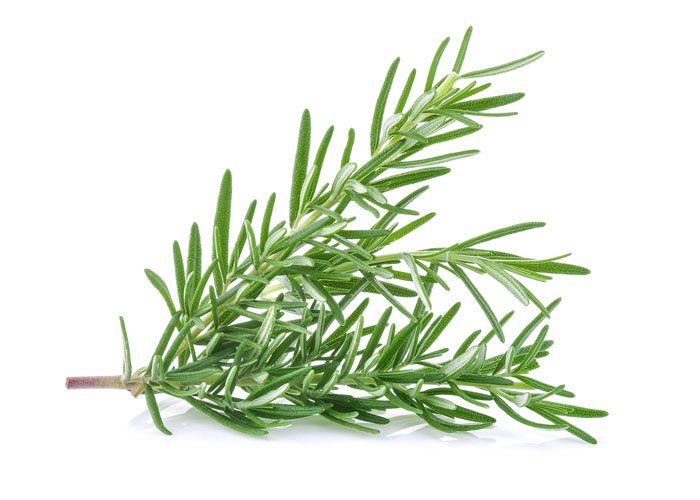Rosemary is pine-scented herb, that grows into a small shrub that can reach up to four feet in height in an ideal climate. The plant produces flat, needle-like leaves that are about one-inch in length, green in colour with a silver-grey sheen on the underside. Rosemary’s needle-like leaves grow in thick rows, straight upward on multi-branched, woody stems. The fragrance is very pungent, with a bitter and astringent, pine-like taste. Rosemary has a wide variety of uses. It is a potent herb and should be used sparingly. In culinary applications, Rosemary pairs well with other herbs, but can be used lightly on its own.

Health Benefits
Rosemary contains carnosic acid, a compound known for its powerful antioxidant properties. Studies have found that carnosic acid can slow the growth of cancer cells in the body and even lower the risk of developing tumours.
Studies have shown that the carnosic and Rosmarinus acids in rosemary have powerful antibacterial, antiviral, and antifungal properties. Consuming rosemary regularly can potentially help lower the risk of infection and help the immune system fight any infections that do occur.
Although more research is needed, preliminary studies indicate that rosemary has a positive impact on reducing anxiety and stress. In a randomized trial conducted on university students, rosemary was found to improve the students’ sleep quality and lower their anxiety levels when compared with a placebo.
Rosemary has been used for centuries as a memory aid, and studies in aromatherapy using rosemary have corroborated some of these claims. One study found significant improvements in cognitive performance within 20 minutes of inhaling rosemary essential oil.
Rosemary is especially rich in phytochemicals. While phytochemicals aren’t essential for survival like vitamins and minerals are, they are nevertheless important for fighting disease and maintaining overall health. The phytochemicals in rosemary may help to improve eye health, regulate liver function, and lower the risk of asthma.
Locations of Harvest

Time period of Harvest

Harvest Process
Rosemary plant is a hardy and temperate that can tolerate frost very well. It thrives well at day temperatures of 20°C to 26°C. The rosemary plant is very adaptable and can be grown in almost all areas. Rosemary crop can be harvested once or twice a year depending on whether it is cultivated for plant material or essential oil. Mechanical harvesting is preferred, and a fist cutting can be done in the seeding year. However, it should be delayed until 18 months after seeding. The yield would be more from re-growth of the crop. If the purpose of the crop is for essential oil, the highest quality, plants should be in bloom and only the flowering tops should be harvested for distillation purpose. For the fresh market, the rosemary herb should be harvested frequently at a young stage as young, fresh shoots are used in culinary preparations.

Dehydration Process
A winnowing machine separates everything from the rosemary that is heavier than the plant itself, such as small pebbles, metal particles or stems. Another machine then sieves out everything that is lighter than the plant like very fine dust. Here, the rosemary is cleaned and then packaged. The final destination for the rosemary is of course the consumer’s kitchen, where it is used to lend a spicy note to pork, for example. This tasty herb is known for containing high levels of essential oils.
